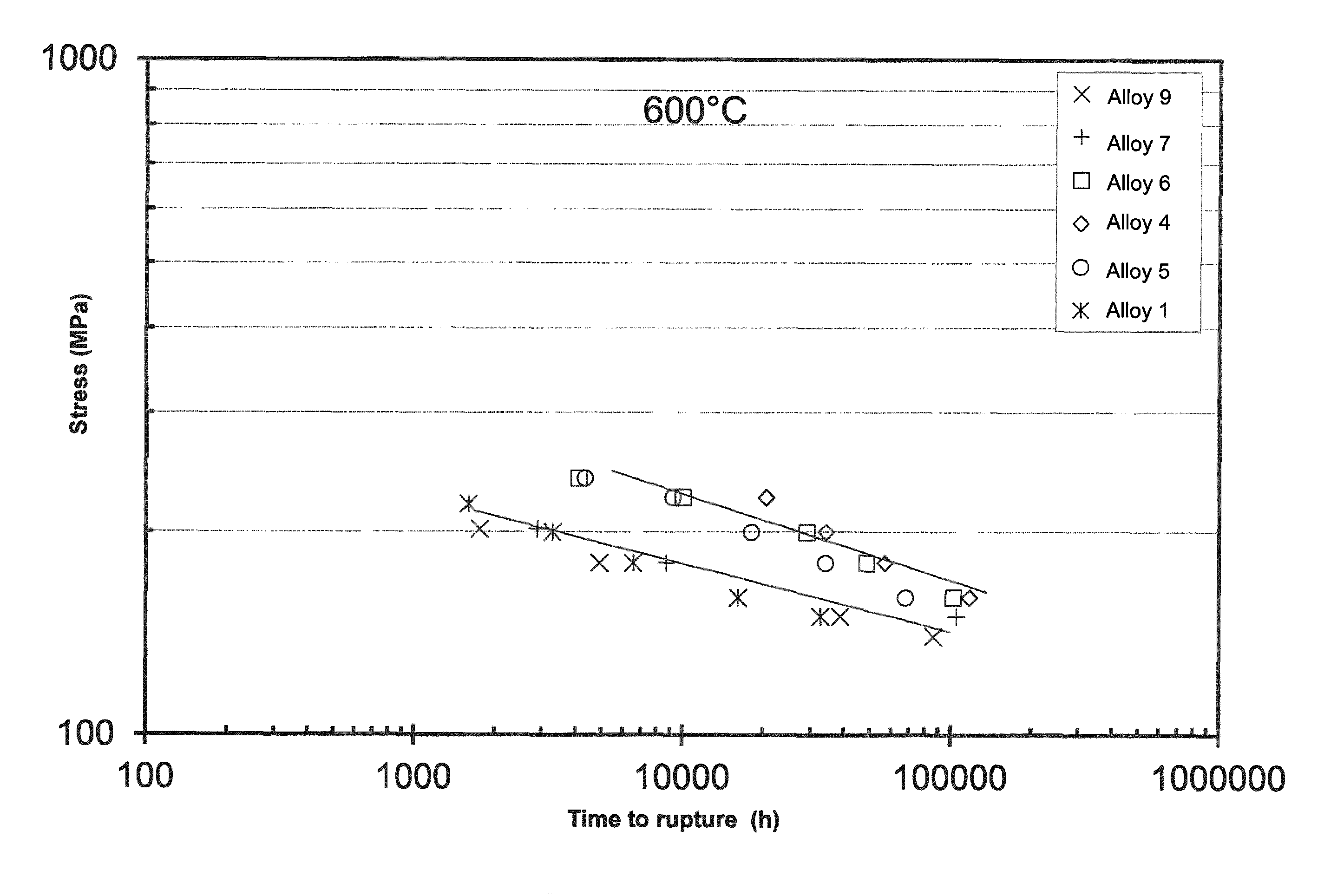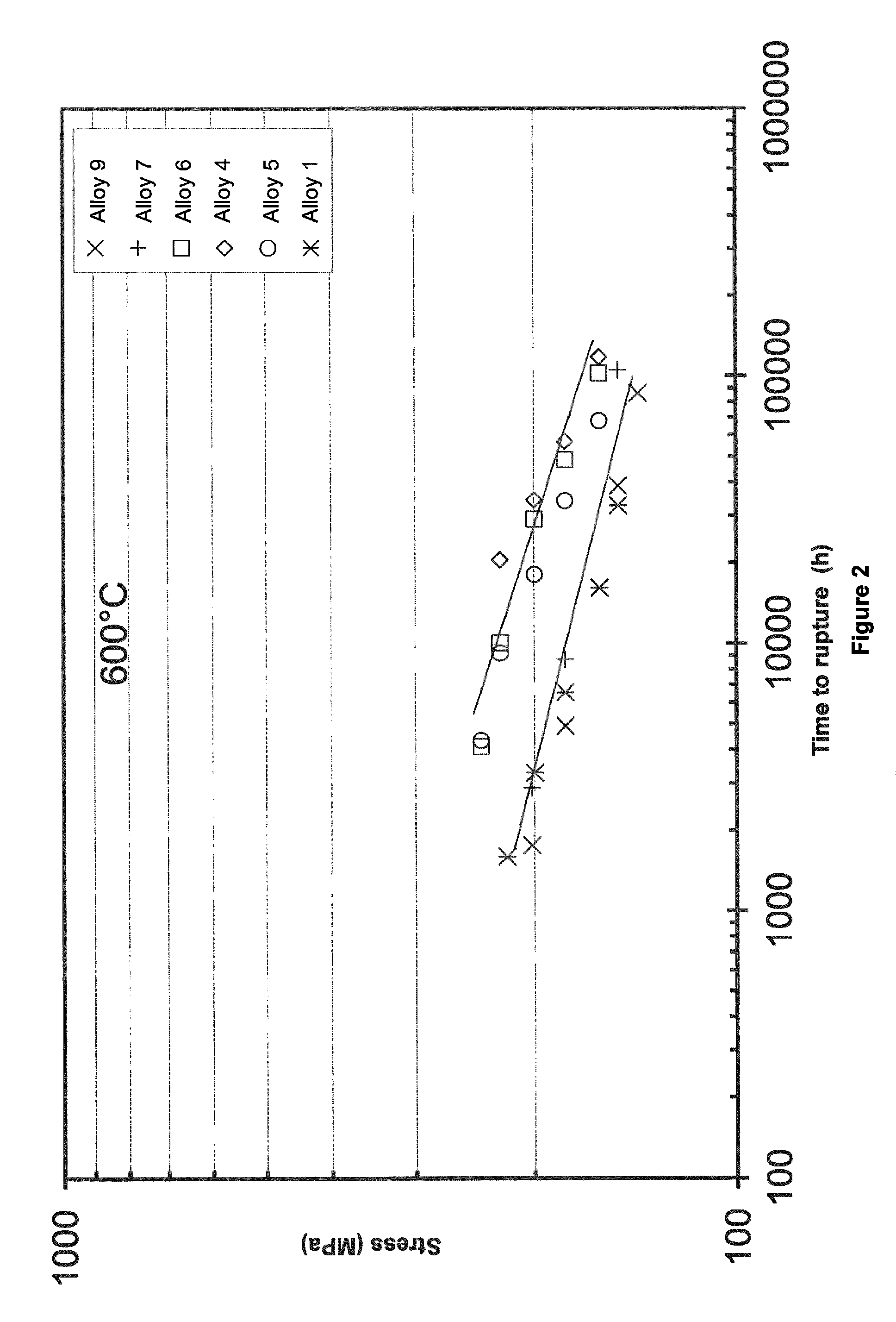Austenitic alloy
a technology of austenitic alloy and austenitic alloy, which is applied in the direction of steam boiler components, steam boilers, lighting and heating apparatus, etc., can solve the problems of inability to meet the requirements material in components starts to creep, and steel does not exhibit the creep strength necessary to meet the needs of biomass power plants, etc., to achieve the effect of reducing the formation of sigma phase, reducing the negative impact of ductility and elongation
- Summary
- Abstract
- Description
- Claims
- Application Information
AI Technical Summary
Benefits of technology
Problems solved by technology
Method used
Image
Examples
example
[0052]Following the inventive alloy will be described with reference to a concrete example.
[0053]Ten steel heats were prepared by conventional steel making methods. The composition of respective steel heat is shown in table 1. The conventional metallurgical process according to which the heats were prepared was as follows: Melting by AOD method-hot rolling-extruding-cold pilgring (cold deformation)-solution annealing-water quenching. The hollow bar material after the hot extruding was then cold pilgred with a cold deformation between 40 to 80%, followed by a solution annealing at a temperature between 1050 to 1180° C. depending on the dimension. The following table shows the details.
[0054]
ColddeformationAlloyHeat(%)AnnealingCooling176355440-801050-1180° C. / 5-25 waterminutesquenching246226940-801050-1180° C. / 5-25waterminutesquenching3477353 40-801050-1180° C. / 5-25waterminutesquenching446983740-801050-1180° C. / 5-25waterminutesquenching547198840-801050-1180° C. / 5-25waterminutesquenchin...
PUM
| Property | Measurement | Unit |
|---|---|---|
| rupture elongation | aaaaa | aaaaa |
| rupture elongation | aaaaa | aaaaa |
| temperatures | aaaaa | aaaaa |
Abstract
Description
Claims
Application Information
 Login to View More
Login to View More - R&D
- Intellectual Property
- Life Sciences
- Materials
- Tech Scout
- Unparalleled Data Quality
- Higher Quality Content
- 60% Fewer Hallucinations
Browse by: Latest US Patents, China's latest patents, Technical Efficacy Thesaurus, Application Domain, Technology Topic, Popular Technical Reports.
© 2025 PatSnap. All rights reserved.Legal|Privacy policy|Modern Slavery Act Transparency Statement|Sitemap|About US| Contact US: help@patsnap.com



